Quito is the capital city of one of the most underrated countries in South America. It’s also one of the continent’s most spirited yet understated cities. It doesn’t have the draw that other nearby cities and countries do, which is a shame because it’s such an interesting place to visit. From its picturesque historic core to its eclectic neighborhoods and museums, there’s so much to do and see in this city. Which is why I’ve assembled this Quito 4 Day Itinerary to help you plan the best possible trip to Quito.
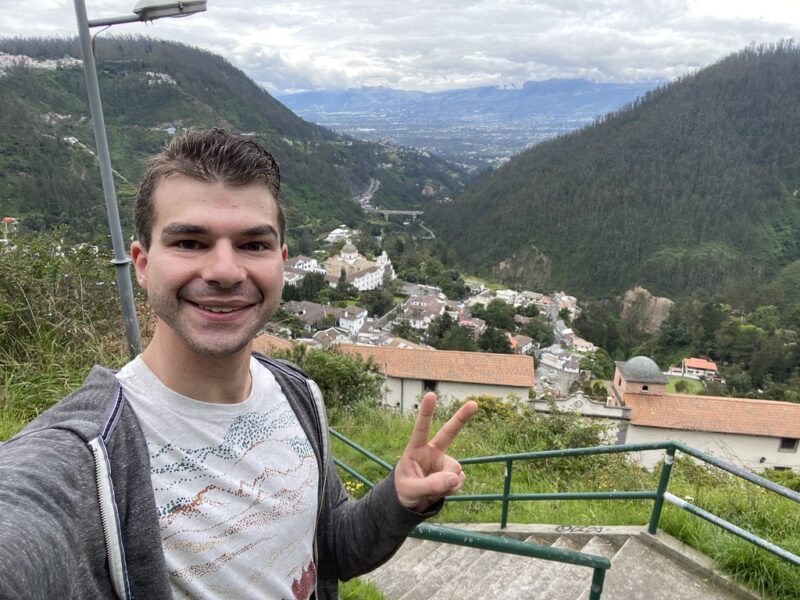
This itinerary will cover how to spend 4 days in the Ecuadorian capital, from what sites to explore, what restaurants to try, and what day trips to do from the city. Hopefully after reading this you gain a better understanding of Quito’s unique identity and are also convinced to book that trip to Ecuador. Without further ado, let’s dive in.
By Carter LaCrosse and Stephen Tantoco
Subscribe to my Youtube channel @ Stephen Flores Travel, like me on Facebook at Passport Perspective, and follow me on Instagram / Twitter / Tiktok @StephenJFlores.
This post contains affiliate links. We receive a small commission for purchases made after clicking on these links at no extra cost to you.
Quito Itinerary Introduction
Before I get to the meat of this Quito itinerary, there are some things about Quito you need to know about before you go. Things like when to go, what public transportation options are available, what the climate is like, and other important things to consider when planning a trip to this city. Let’s go over them one by one.
When to Go, Climate, and Weather

Because Quito is located just south of the Equator, it doesn’t have traditional seasons per se. Instead, their year is split into two “seasons”: dry and wet. The dry season happens from June to September, with the wet season taking place from October to May. Because of this, I would highly recommend visiting from June to September. Visiting at this time means you’ll have a higher chance of encountering sunny days during your trip.
Because Quito’s elevation is high, temperatures remain consistent throughout the year. When I visited in June, temperatures hovered at around 60F or 18C. Also, even though June to September are Quito’s dry months, you should still expect a couple of scattered showers to occur everyday. But don’t worry, they normally don’t last longer than 15 minutes.
High Elevation
As mentioned, Quito is located at a high elevation. At 9,350 feet (2,850m) it’s one of the highest capital cities in the world. Because of this, arriving at Quito can be challenging for people who are sensitive to high altitudes. As such, I recommend you have a relatively light first day so that you can acclimate to the altitude. This Quito itinerary is designed so that your first day is relatively light so you can acclimate properly.
Where to Stay
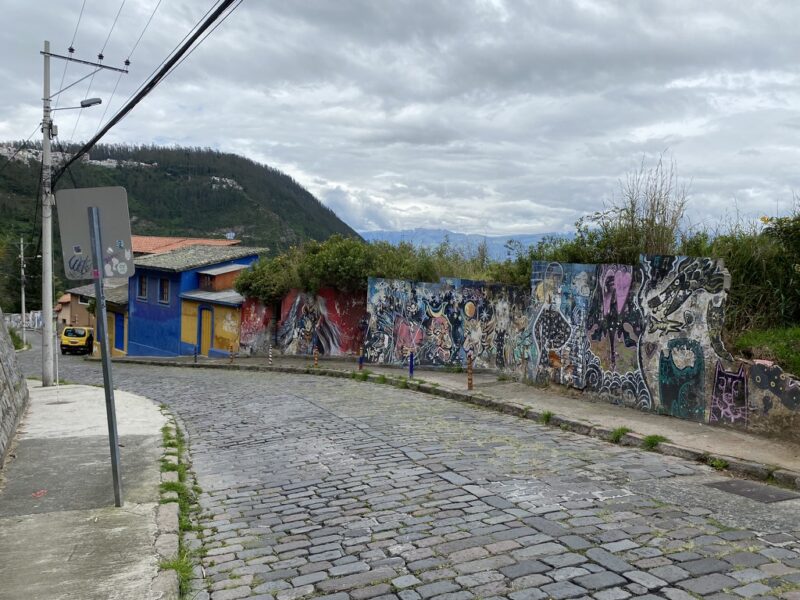
From hostels and boutique hotels to full-fledged hotels, there are a lot of diverse accommodation options in Quito. Here are some of the accommodation options I recommend for your Quito trip:
Hostels
Mid Range
Luxury
AirBNB is also widely available in the city and is also very affordable. Definitely check the Airbnb website and app to see if their accommodation options fit your needs better than a hotel.
Money Matters
The US dollar is the official currency of Ecuador, making it very easy for Americans to travel to Ecuador. However, Ecuador isn’t completely cashless and many places still require you to pay with cash. Keep small bills with you at all times and be sure to have some dollar coins with you as well. Even $20 bills could be hard to break in restaurants and shops, especially in smaller cities and towns.
Getting Around
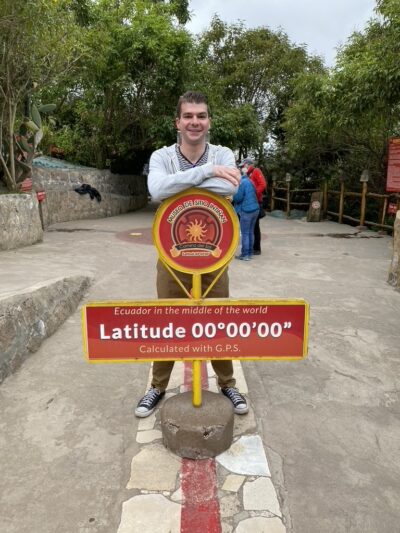
There are a couple of different transportation options available in Quito. This Quito itinerary will briefly break down all of them.
Metro
Opened in 2023, the Quito Metro is the city’s first subway system. It currently has one line that travels from the north of the city to the south. It passes through the Centro Historico and other notable places, making it handy for tourists to use. A ride costs $0.45 (a reduced rate of $0.22 is available for children and the elderly) and tickets can be bought at metro stations. You can also connect to a Quito bus line for a combined fare of $0.60.
Buses and Trolleys
Buses and trolleys abound in Quito. There are three types of buses and trolleys in Quito: The Ecovia, the Trole, and the Metrobus. Most of these routes will typically cost $0.25 per ride no matter the distance.
Ecovia
Running on Ave. 6 de Diciembre, the Ecovia starts at Rio Coca and ends at La Marin. You can reach the interprovincial bus station Quitumbe by riding the Ecovia. The Ecovia runs regularly from 5am to 10pm on Mondays to Fridays and 6am to 9:30pm on weekends and public holidays. During evening hours (which are from 10pm to 5am on Mondays to Fridays and 9:30pm to 6am on weekends and holidays) they operate hourly, make limited stops, and cost $0.50.
You’ll pay for your Ecovia ride at the till when entering an Ecovia station. You must have a quarter on-hand to pay the fee. If you don’t, you can exchange small bills for quarters with any of the station’s booth attendants.
To get off at your stop, just push the stop request button to alert the driver that you would like to get off the Ecovia at your chosen station.
Trole
The Trole runs from north to south on Ave 10 de Agosto from Labrador to El Recreo. Just like the Ecovia, it terminates at the Quitumbe provincial bus station. It runs regularly on Mondays to Fridays every 9-12 minutes from 5am – 12am and on weekends and holidays every 15 minutes from 6am -10pm. Just like the Ecovia it has evening hours where it has limited stops and costs $0.50.
Similar to the Ecovia, you pay for your fare when you enter the station. You need to pay the exact amount, meaning you need to have quarters. If you don’t have one, you can exchange for some with the station’s booth attendants.
To get off at your stop, press the stop request button. At Moran Valverde, El Recreo, and Labrador stations, the Trole breaks off and services secondary routes.
Metrobus
Terminating at Estación Varela in the south and Estación La Ofelia in the north and running along La Prensa and America, the Metrobuses are a reliable form of public transportation that make several stops in Quito.
The Metrobus is also what you want to take if you want to reach the Mitad del Mundo. You would need to go to Estacion La Ofelia and, once there, inquire about which buses are heading to Mitad del Mundo.
In Metrobuses, you won’t pay at a till. Instead, you’ll pay the tout (the drivers assistant) the fare when you enter the bus. The tout will also shout out which stations are coming up. Just like the Ecovia and the Trole, you need to press the stop request button to get off the bus.
Taxis
Taxis are a popular mode of transport in the city. They’re relatively cheap and shouldn’t cost you more than $5 for a quick ride. Unlike other cities in Ecuador, Quito taxis are metered. If your taxi driver doesn’t want to turn his meter on, calmly exit the taxi and find a taxi that will. Taxis aren’t recommended for going to Mitad Del Mundo as it’s quite far from the city.
Uber
Uber is available in the city and is actually cheaper than taxis most of the time. You can use it to get to parts of the city that are unreachable via public transportation. This is actually the mode of transport I would recommend you use during your trip. A trip will only cost you a few dollars and it’ll save you a lot of time. Just note again that, even with Ubers being cheap, the best way to get to Mitad Del Mundo is by bus.
Language
Spanish is the official language of Ecuador. Just like other South American countries, it may be hard to communicate in English at some establishments and in cities and towns outside Quito. Keep a handful of useful phrases memorized to help with the language barrier.
Safety
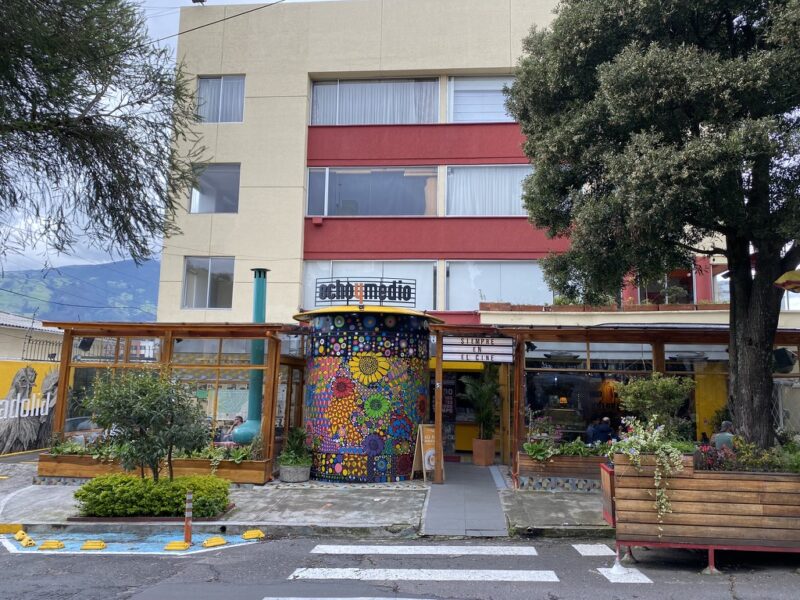
While violent crime is rare in Quito, petty crime remains a risk, especially in crowded areas and areas frequented by tourists. This Quito itinerary recommends exercising normal precautions like you would in any other big city.
There have been incidents of pickpocketing and other petty crimes happening on public transportation. When riding public transportation, keep valuables at your accommodation, don’t flash your jewelry or phones, make sure the valuables you take with you are secure, and don’t wear your backpack on your back while on the buses and metro, especially when it’s crowded.
While it’s fine to explore in the morning, the Centro Historico tends to get dodgy at night, so avoid the area after sunset. If you plan on visiting El Panecillo, do not, and I repeat DO NOT, walk to it, even in the daytime. The route it’ll take you to get there is unsafe, with muggings and thefts being reported in the area.
Now that we’ve gone over the basics, let’s get right into the meat of the Quito itinerary!
Day 1: Historic Quito
Have Breakfast at Maiz and Yuca
Start the first day of this Quito itinerary with some breakfast at Maiz and Yuca. You’re going to be exploring Centro Historico today, so eat at the Italia location to be sure you’re as close as possible to Centro Historico.
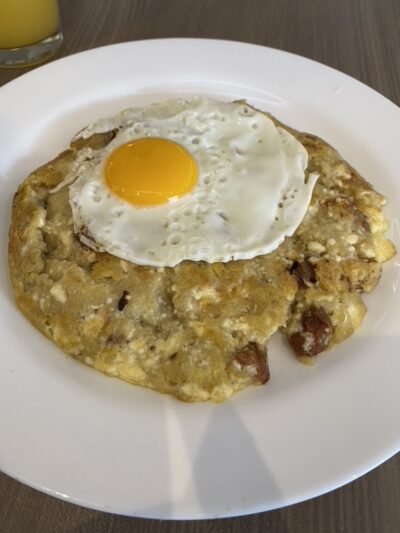
I highly recommend trying Bolon, a Ecuadorian delicacy made with green plantains and cheese. Once finished, catch an Uber or ride public transportation to Centro Historico.
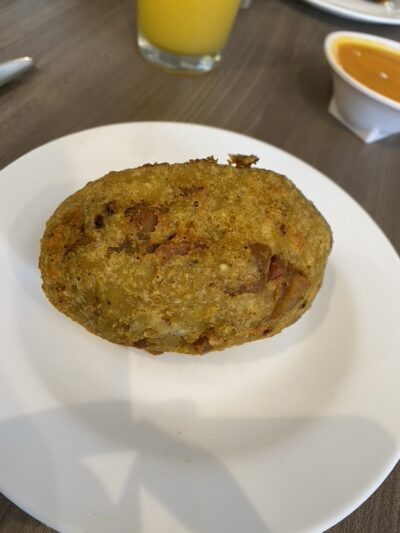
Explore the Centro Historico
Built on the ashes of what was the capital of the Northern Incan Empire, Quito’s Centro Historico is the first city in the world to be named a UNESCO World Heritage Site, gaining that recognition in 1978. The city used to be confined to the Centro Historico, but has since expanded outward. However, this area remains the most historic part of the city.
People Watch at Plaza San Francisco
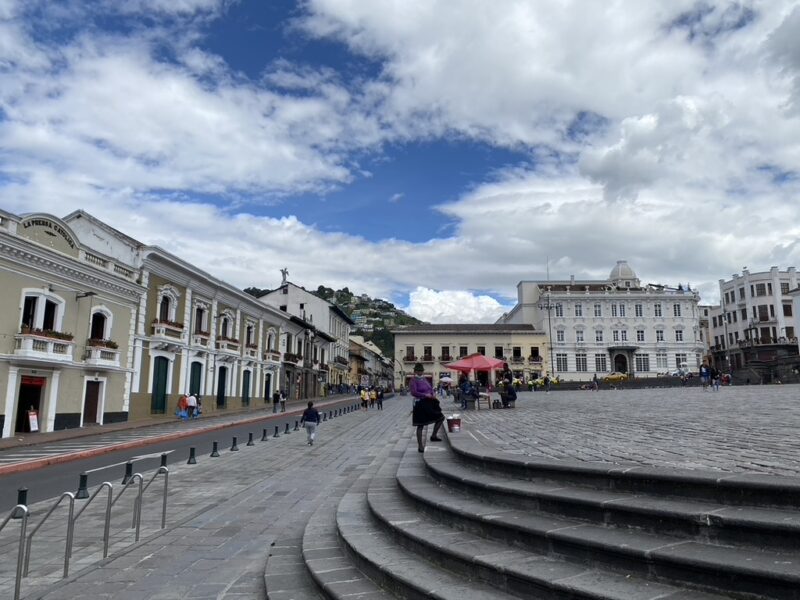
Start your exploration of Centro Historico at Plaza San Francisco. Built on ancient Incan ruins just like most of the Centro Historico, it is named Plaza San Francisco because the Convent and Church of San Francisco is located on one side of the Plaza. People watch here for a bit and take in the old buildings surrounding the Plaza. Then make your way down to Iglesia de la Compañia de Jesus.
Marvel at the Gold Interiors of Iglesia de Compañia de Jesús
Far and away the most ornate church in Quito, Iglesia de Compañia de Jesús took 160 years to complete. Commissioned by Jesuit priests who wanted their own church in Quito, the design of the church is an amalgamation of different architectural styles but is mainly done in the Baroque style. It is one of the best examples of Spanish baroque architecture in South America. It’s primarily known for its nave being completely covered in gold.
After paying the entry fee ($5), take your time to walk around and admire the gold-plated structure of the building. It should take you around 15 – 20 minutes to completely tour the inside of the church. Once you’re finished, make your way out of the church and head towards the nearby Plaza Grande to continue this Quito itinerary.
Explore Plaza Grande
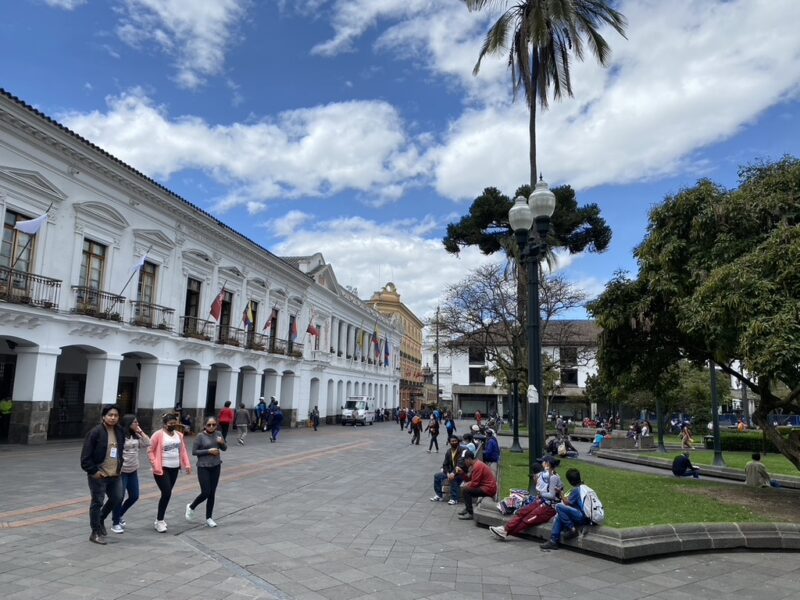
Also known as Plaza Independencia, Plaza Grande is the main square of the Centro Historico. The square is known for the monument to the independence heroes of August 10, 1809, which is the date when the Royal Audience of Quito first rose up against the Spanish monarchy. Surrounding the square are the Plaza Grande Hotel, The Municipal Palace, Carondelet Palace, the Archbishop’s Palace, and the Metropolitan Cathedral.
Take your time to wander the square and admire the different monuments. A lot of local life happens in this square. You’ll see families milling about, especially on the weekends. Once you’re ready to move on, head on over to the Basilica Del Voto Nacional.
Wander Through the Basilica del Voto Nacional
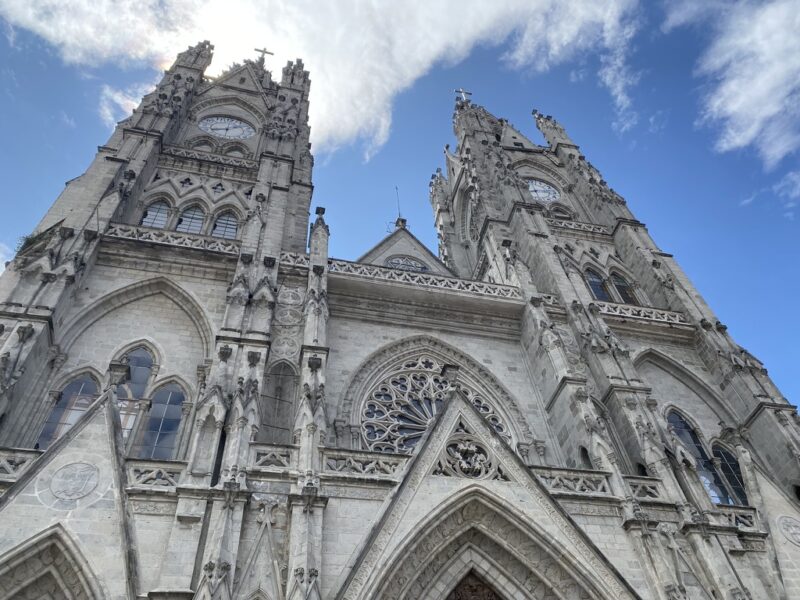
The Basilica del Voto Nacional is the largest neo-Gothic Basilica in the Americas. Built on the idea that it would serve as a reminder of the consecration of the country of Ecuador to the Sacred Heart of Jesus, it was constructed with a budget of 12,000 pesos. Interestingly enough, the Basilica, although consecrated in 1988, remains unfinished, with some devotees believing that its completion will usher in the end of the world.
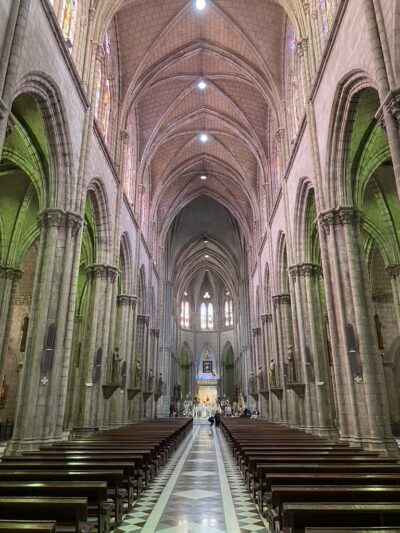
Entering the church will set you back $4, but it’s worth it to see the interior and to climb to the top of the tower. Getting to the top of the tower is challenging, requiring visitors to maneuver up ladders to get to the top. But once you get there, the views are nothing short of spectacular. This is without a doubt the highlight of the Centro Historico and you simply cannot miss it when you’re in Quito.
Feast on Authentic Ecuadorian Cuisine at Mercado Central
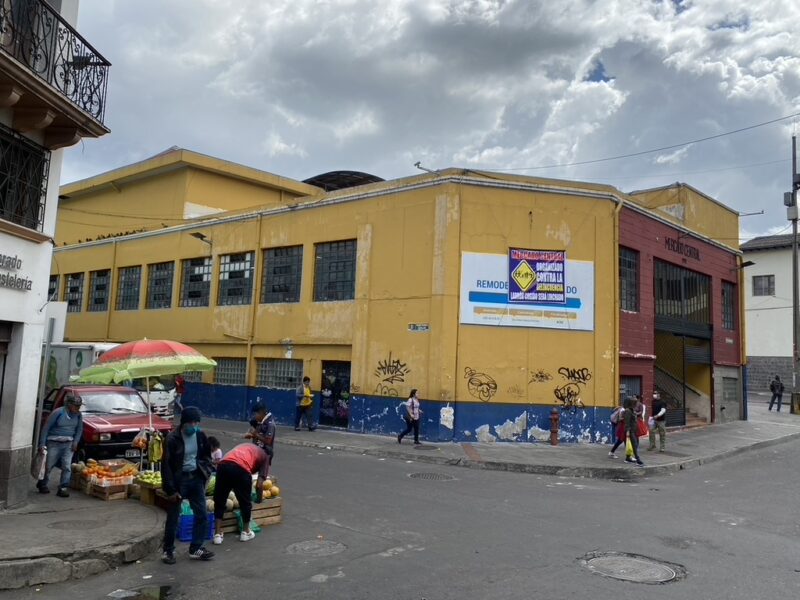
You’ve probably worked up an appetite after all that exploring, so head on over to Mercado Central to grab some food. This is probably the most popular market in Quito and is just steps away from the Centro Historico. Opened in 1952, the market was constructed after a fire broke out in an open air market in 1950. The vendors affected by the fire needed a new place to sell their goods and, with the help of the government, Mercado Central was born.

The undisputed best part of the market are the food vendors. You’ll find almost every kind of Ecuadorian dish for sale here, such as fritadas and hornado. Once you’ve had your fill, make your way to the nearest public transport station or call an Uber to take you to the next attraction on this Quito itinerary, which happens to also be the best viewpoint in Quito.
Admire the Views from El Panecillo
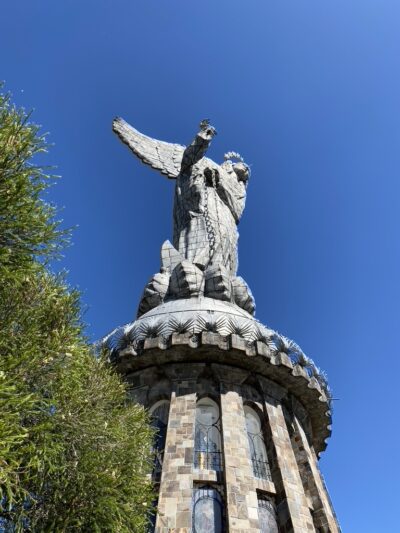
Translated as “small piece of bread”, El Panecillo is a hill located south of the Centro Historico. It was built on top of a former Incan temple to the sun that was destroyed by Spanish conquistadors. Nowadays it is THE place to get an unbeatable view of Quito from above.
The centerpiece of the hill is a statue that can be seen from almost anywhere in Quito: the Virgen del Panecillo. Commissioned by the Oblates religious order in 1976, it was designed by Agustín de la Herrán Matorras. It stands over 45 meters tall and was inaugurated in 1976. For context, Christ the Redeemer in Rio de Janeiro stands at about 30 meters tall.
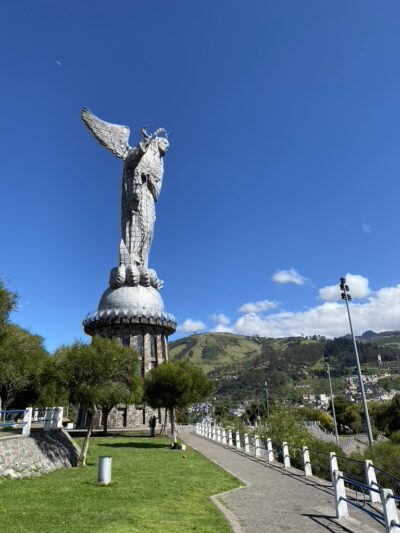
As mentioned earlier, do NOT attempt to walk to the top of the hill as the route passes through a dodgy part of town that has become known for muggings. An uber is a safer bet. Climb up to the base of the statue for the best views.
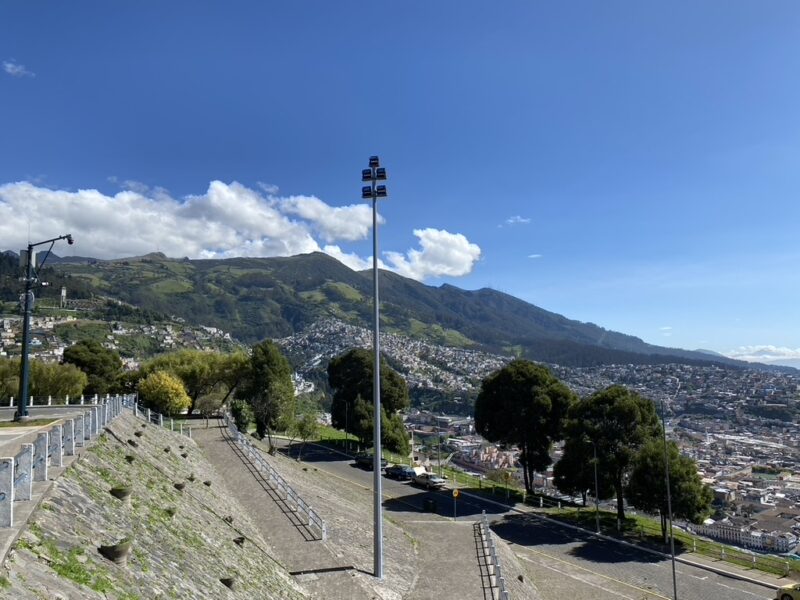
If you want to see it on a clear day, consider doing this in the early morning. If you’re lucky you might even see the surrounding volcanoes. It costs $1 to enter the statue, which is well worth it for the museum and the views that you can get, but the view is just as amazing from the foot of the statue.
Satisfy Your Taste Buds with a Tasting Menu at Somos
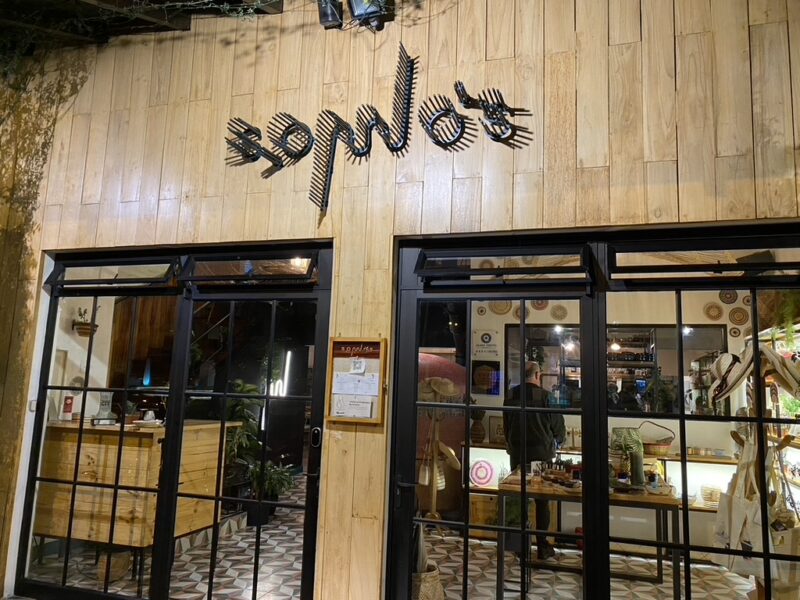
After a long day of touring, you deserve to treat yourself. So head to the acclaimed Somos restaurant for a more refined taste of Ecuador. Featuring ecuadorian dishes crafted with a global mindset, this restaurant is actually pretty affordable compared to other upscale restaurants in other countries.

Somos was created by Alejandra Espinoza, an Ecuadorian chef who has worked under several Michelin starred chefs in New York City. I highly recommend having a meal here for a taste of elevated Ecuadorian food. I’d also recommend trying the cocktail pairing option that goes with each course. Reservations are recommended.
And with that our first day is done! I hope you had an incredible first day. Be prepared, though, because this Quito Itinerary is only going to get better from here.
Day 2: Mitad Del Mundo
Stand on the Equator at Mitad Del Mundo
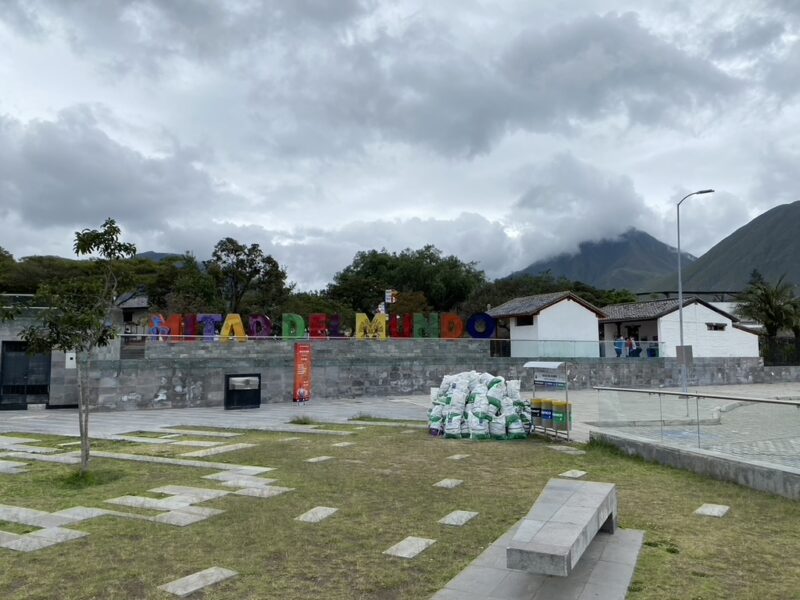
Today we’re heading to the middle of the world! So grab breakfast from your hotel or nearby restaurant and be ready to go to Mitad Del Mundo.
To get to Mitad del Mundo, you can take public transportation or a taxi. A taxi will probably cost you $10-$20 dollars depending on where you’re coming from, while public transport will cost you less than $1. You could also book a guided tour which includes hotel pickup and drop off and an English-speaking guide, but this will be pricier than doing it yourself. If you want to book a tour though, here’s the one I recommend.
If taking public transport, head to Estación La Ofelia in the north of the city. Once there, buy tickets and get on a bus bound for Mitad del Mundo. They usually depart from the first platform and drop you off a few steps away from the site.
Buses depart continuously throughout the day. If you do take public transport, remember that pickpocketing on buses is common. Secure your valuables before riding public transport. Once you arrive, pay the $5 entry fee and enter the sprawling grounds of Mitad del Mundo.

Mitad del Mundo was constructed in the late 20th century to honor the first Geodesic Mission of the French Academy of Sciences. The mission set out to find where the equatorial line was. It was carried out in the year 1736 and was the first scientific expedition ever conducted. Today, the Equatorial Monument stands as a tribute to that expedition.
Fun fact about the monument: it’s actually built in the wrong spot. The actual equator is located a couple of meters away from where the monument stands today. It’s still an impressive monument, towering over 30-meters tall and featuring a giant globe at its apex.

You cannot go to Mitad del Mundo and not take a picture at the yellow line that signifies the equator. Snap a few touristy pictures then head inside the monument. You’ll be ushered into an elevator and then taken to the very top for a great view of the surrounding area. As you make your way down, every level of the monument has museum displays and exhibits all about the expedition and the equator.
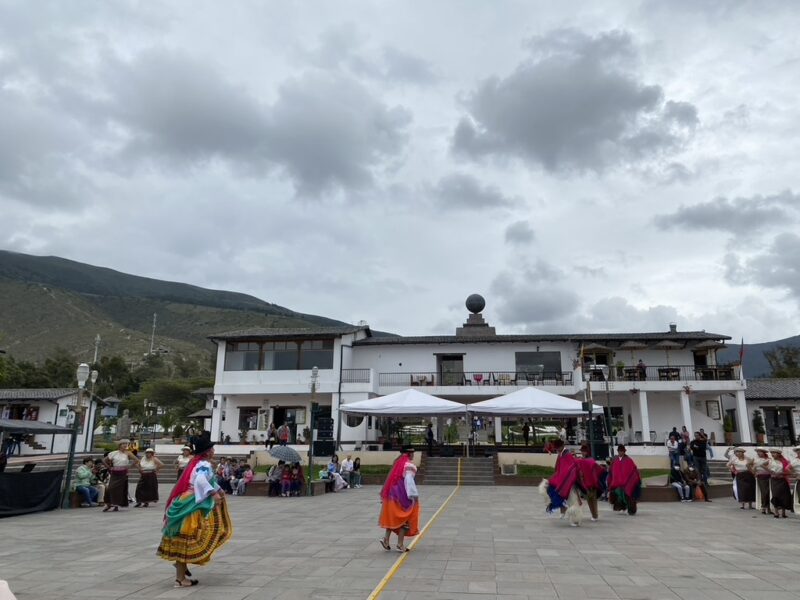
Once you leave the monument, you’re free to explore the rest of Mitad del Mundo. There’s a church, a beer museum, a planetarium, and other fun attractions that you could spend hours exploring. On certain days, there are also cultural performances featuring local music and dances happening at the plaza. Have a bite to eat at the many restaurants here too. Once you’ve explored and eaten to your heart’s content, head to the next spot on our Quito itinerary: the Intiñan Museum.
Learn About Equator Culture at Intiñan Museum

While most people consider the Mitad Del Mundo monument to be the equatorial line, the exact line is about 50 meters north of the monument in the middle of the Intiñan Museum. The Intiñan Museum is a museum dedicated to the equator, similar to the Equatorial Monument in Mitad del Mundo. However, this museum goes a step further than Mitad Del Mundo as it also explores Ecuadorian culture and history.
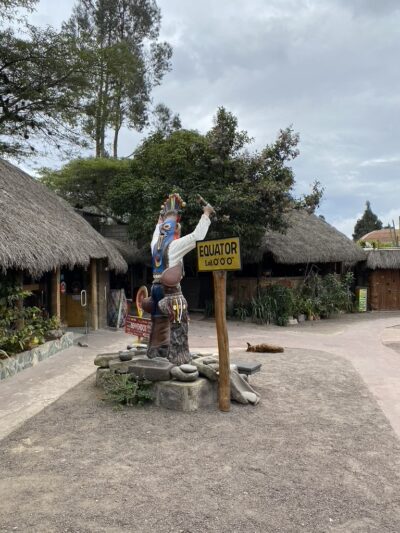
It costs $4 to enter and your visit comes with a guided tour in either English or Spanish. In the museum you can see a rainforest exhibit, a chocolate exhibit, and of course exhibits centered on the equator.
The Intiñan Museum also has various activities centered around the equator that you can participate in. During your tour you can try balancing an egg on a needle and, if successful, you get a certificate. They also have activities based on the Coriolis Effect where they show you how water drains in opposite directions on different sides of the equator. You can also get your equator line pictures here.

Overall, This museum is way more interesting than the Mitad Del Mundo monument so, if you only have time for one, make this one a priority.
After you’re done with that, take the bus or a taxi back to Quito to end your equatorial day with dinner!
Have Dinner at Parque de las Tripas
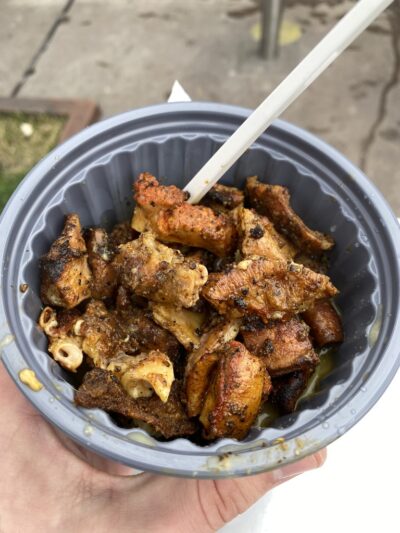
After arriving back in Quito, head to Parque de las Tripas for some local street food. This park is named after the specialty dish that is served here called Tripas, also known as animal intestine. Don’t let that deter you, though, as it is really good. Parque de las Tripas is also a good place to get morocho, a corn-based drink popular in Ecuadorian areas at high elevations. Highly recommend stopping here to try the local foodie experience.
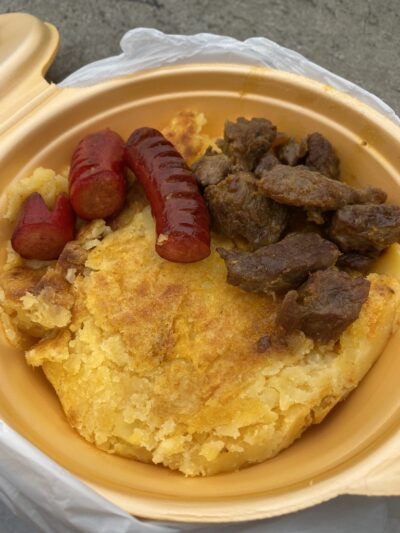
And that ends the second day of this Quito itinerary! Rest up because tomorrow we’re doing something very active!
Day 3: Teleferico
Ride the Teleferico and Hike Rucu Pichincha

After grabbing breakfast at your hotel or local market, head over to the Teleferico station. You’re going to be hiking Rucu Pichincha today! It’s a moderate to difficult hike that will reward you with stunning views. I recommend heading there early as the morning is when it is most clear.
Book an uber or hail a taxi to take you to the cable car station. You shouldn’t pay more than $5 for the ride to the cable car station. Once there, get in line for tickets and then make your way up the mountain. At this point you should have acclimated to the altitude, which is good because the Teleferico is one of the highest aerial lifts in the world, rising over 2500 feet in 20 minutes.
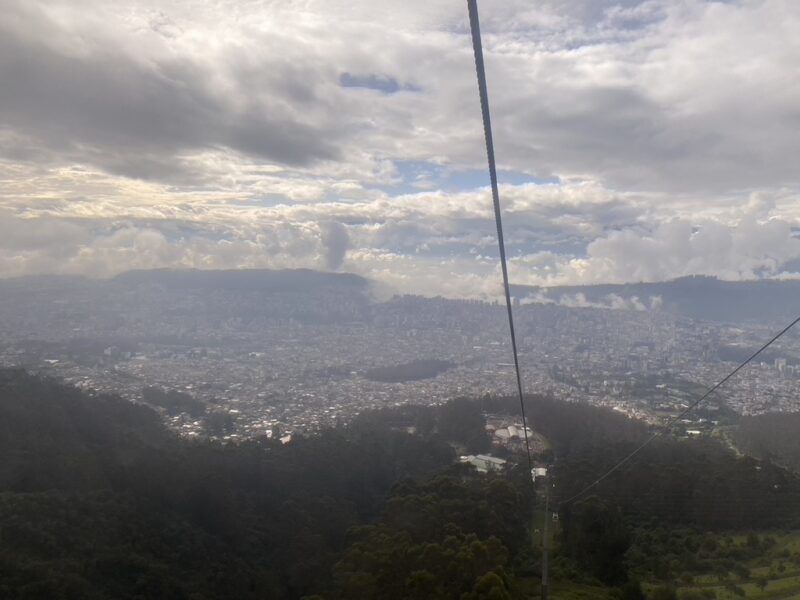
Once you get to the top, there are a couple of shops, restaurants, and even a go kart track and theme park! Prepare to spend a couple of hours up here to explore everything. Keep in mind that it will be cold no matter what time of year you visit so dress accordingly.
The main thing to do here is to hike the Pichincha Volcano. It carries with it a 2,200 foot elevation gain and takes about 5 hours to do. The length of its out and back trail is 4km. If you’re planning on doing the hike, bring warm clothes and abide by any safety warnings present on the day of your visit.

Note that the trail can be difficult to follow, especially on cloudy days. I did this hike in cloudy weather, which isn’t surprising as most days in Quito are cloudy. Towards the top of the summit, I lost the trail. If this happens to you, don’t worry! Just keep going up the rock face till you eventually reach the top. There should be a sign marking the summit at 15,400 feet (4696 meters)
You’ll be rewarded with stunning views of Quito and the nearby volcanoes once you reach the summit. Once you’ve finished the hike, head back down the mountain and back into the city for dinner.
Dinner at Las Menestras de la Almagro

For dinner, assuming you still haven’t had your fill of Ecuadorian food yet, head to Las Menestras de la Almagro for a slice of local life and cuisine. They serve a lot of Ecuadorian specialties in this restaurant, so be sure to try something you haven’t tried yet.
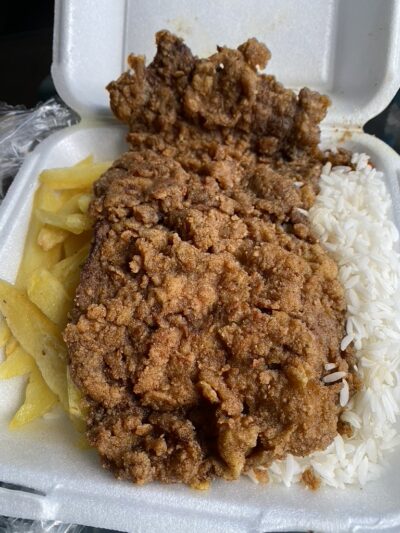
And that ends day 3 of this Quito itinerary! Unfortunately, that means it’s our last day tomorrow. But we’ve got a whole lot more to explore so let’s get to it!
Day 4: Other Areas of Quito
Wander Through La Floresta and Guapulo
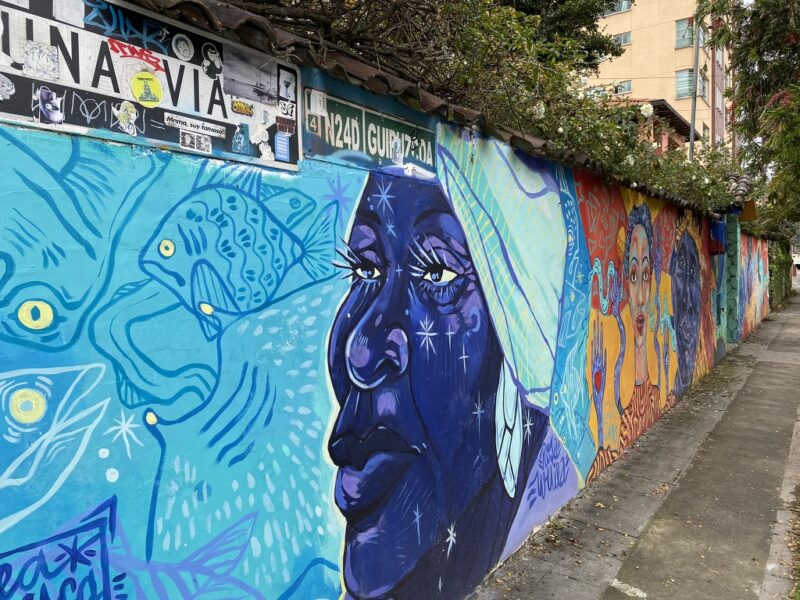
Once you’ve finished breakfast, head to the neighborhoods of La Floresta and Guapulo. These neighborhoods are trendy, artsy, and contain within them many boutique shops, cozy cafes, and bustling restaurants. I recommend just uber-ing to the neighborhoods and walking up and down their inclined, cobblestone streets.
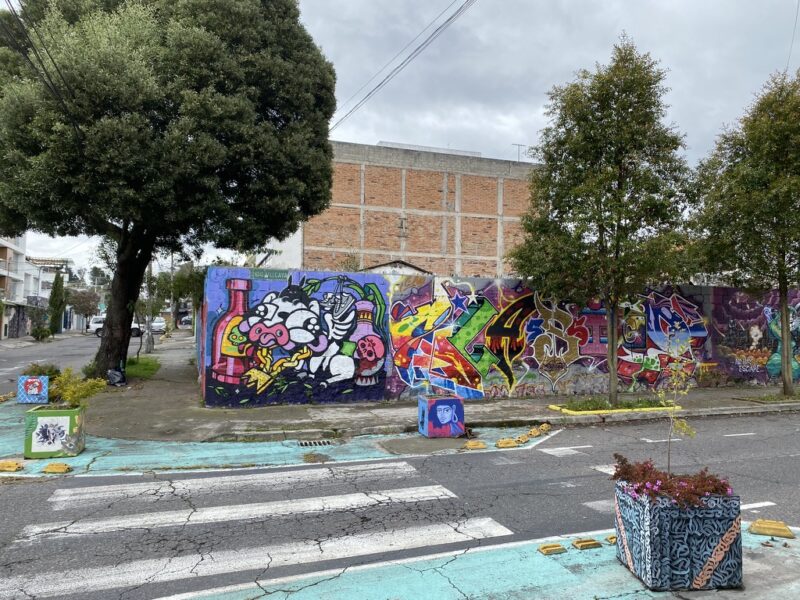
You’ll find lots of street art and even small churches and chapels in the area. Take your time to walk around and soak in the vibe. It’s a charming little area with some really good views as well.
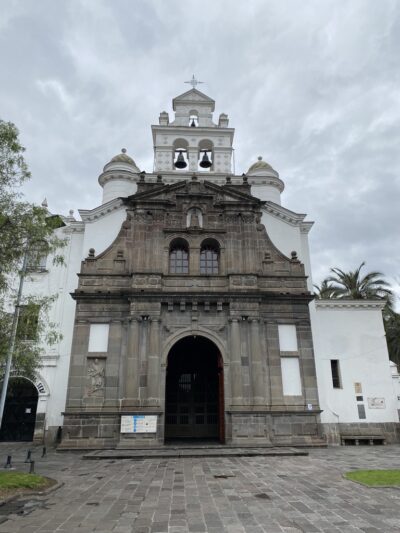
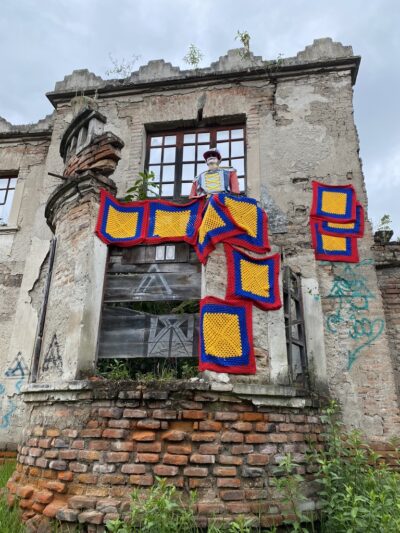
If you plan on exploring this neighborhood, be sure you have the energy to walk back up the hill to get back to where you came from. It can be a bit of a workout, so be sure to do it in the morning when the temperature is at its coolest.
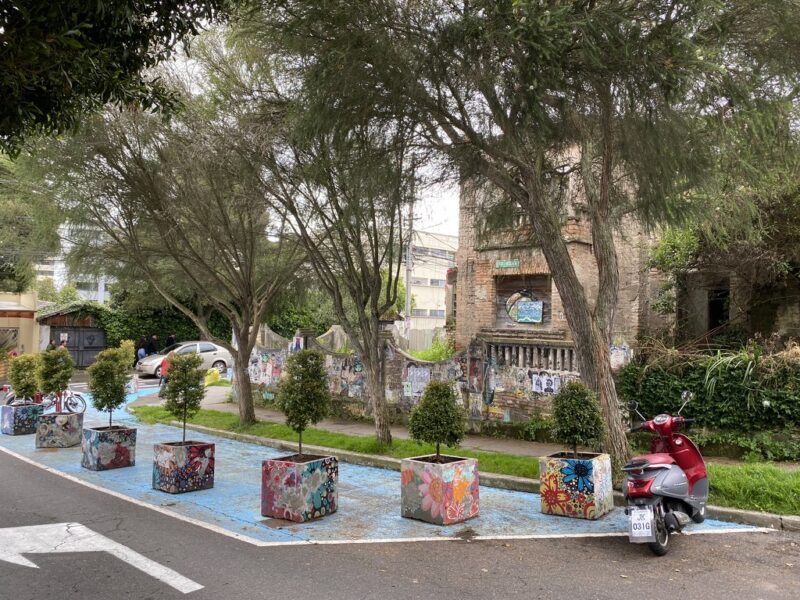
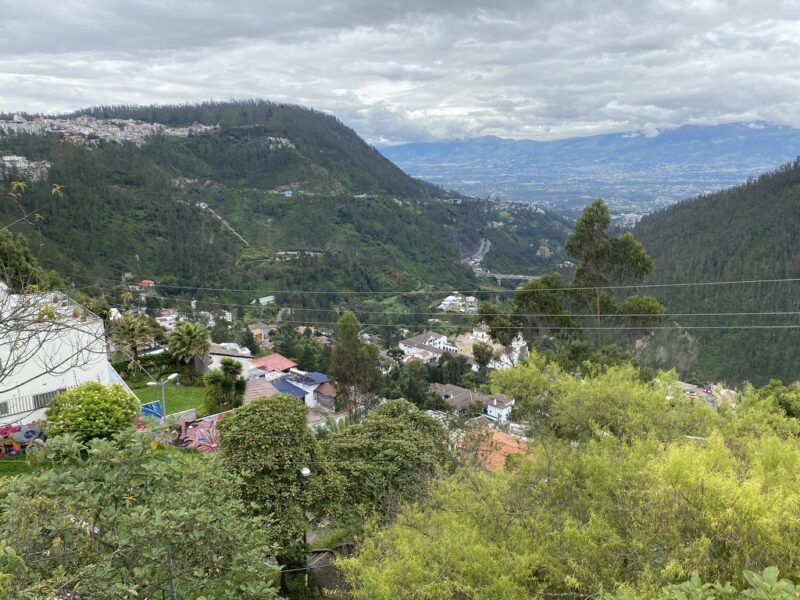
Once you’re done exploring head to Mercado Iñaquito for some local specialties.
Savor Local Delicacies at Mercado Iñaquito

Once you arrive at the Mercado, head to the El Sabroso Hornado stall that’s tucked away in a corner of the market. This is where you can try the famous Ecuadorian roast pork. Their pork was, in my opinion, the best I had in Ecuador. This market is also a great place to try cuy, which is an Ecuadorian specialty made out of roasted guinea pig. Once you’ve had your fill, head out and into an uber or public transportation to get to the last attraction of this Quito itinerary.
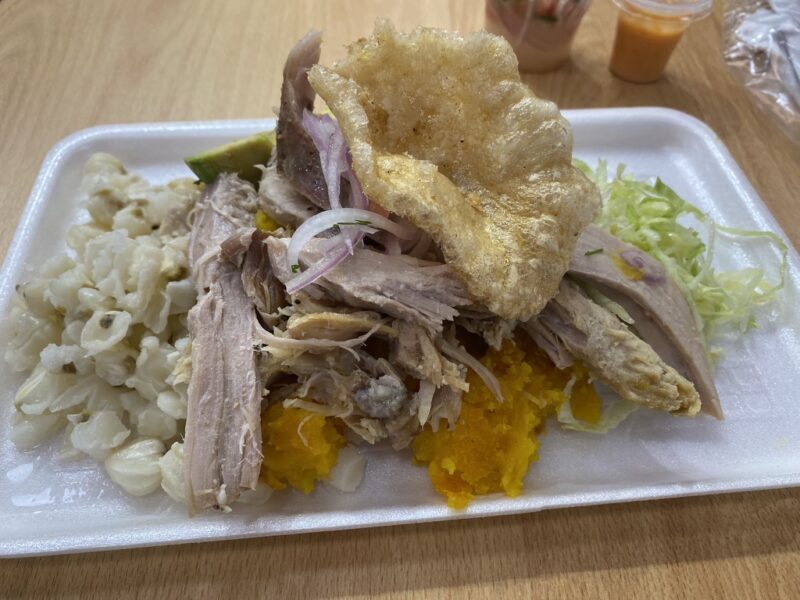
Explore Parque La Carolina

To experience local life, head over to Parque La Carolina. This public park is teeming with life, especially on the weekends. While you won’t find many tourists here, the park does have some stalls selling snacks and souvenirs as well as ice cream which is especially delicious on a warm afternoon.
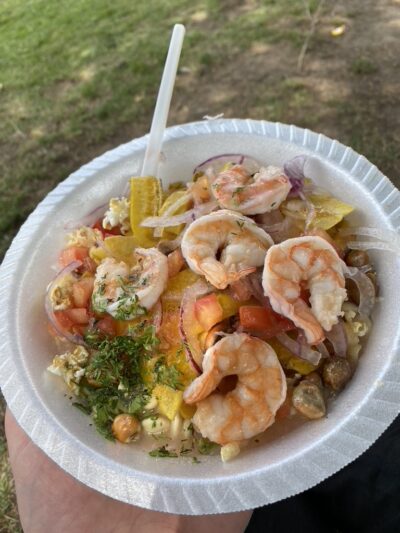
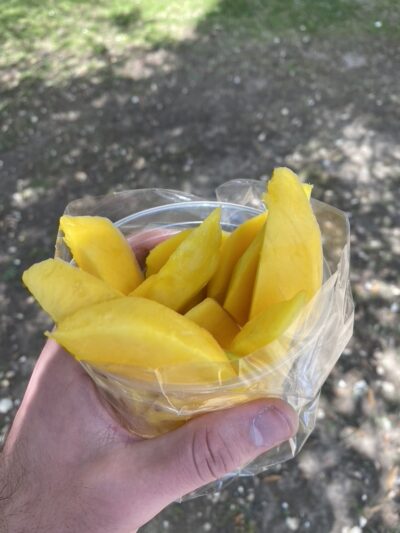
Sit down under a tree with a snack and watch the world pass by in front of you. Take time to walk up and down the park, admiring the different trees, fountains, and water features that make up the park. You should be done in time for dinner, so head out of the park and to your last meal in this Quito itinerary.
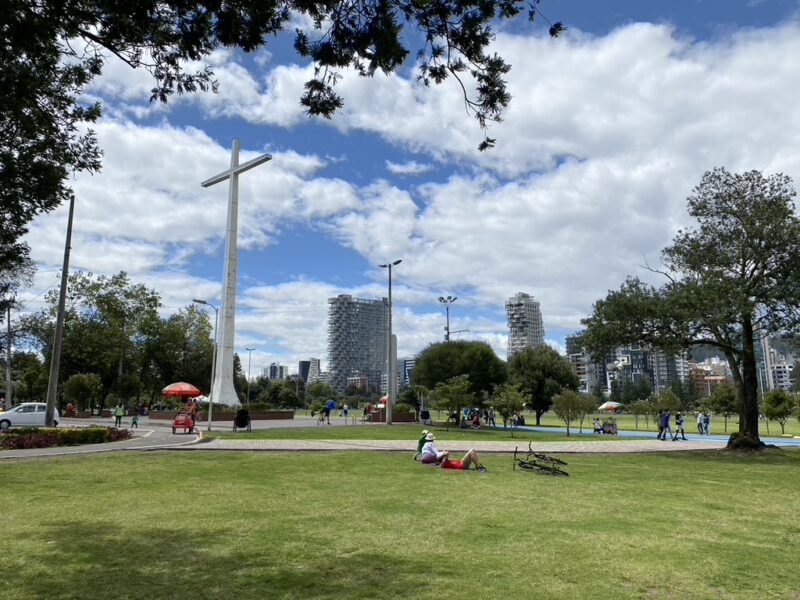
Dinner at De La Llama
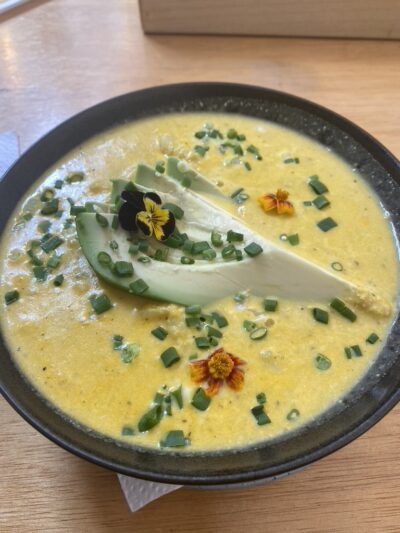
To end this itinerary, I recommend dining at De La Llama. This little cafe is a great place to try llapingachos, a famous Ecuadorian dish made of stuffed potato and cheese balls. If this doesn’t appeal to you, though, they have a bunch of other dishes that are sure to suit your taste buds.
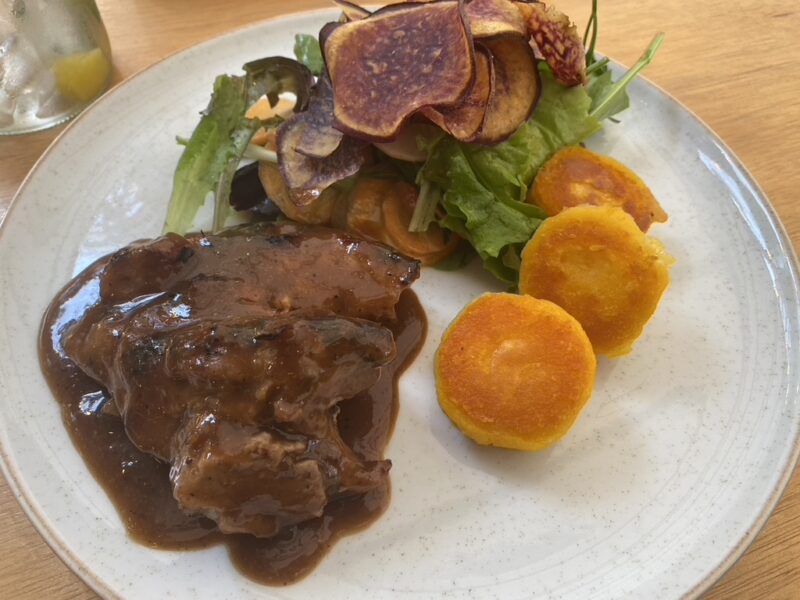
Once you’re done, head back to your hotel and prepare to leave Quito.
Additional Things to Do in Quito
If you have additional time in Quito, consider going to Cotopaxi or Otavalo. Cotopaxi is a famous volcano near Quito where you can visit various scenic viewpoints, as well as do some short hikes. Otavalo is a small mountain town near Quito famous for its market as well as its scenic views of nearby volcanoes and lakes. There are tours that go to both of these places. I recommend this tour for Cotopaxi and this tour for Otavalo.
Quito Itinerary Conclusion
And that ends our Quito itinerary! I hope this guide was able to help you better plan your trip to Quito. If you have any questions, feel free to reach out!
If you found 4-Day Quito Itinerary helpful, consider subscribing to my newsletter to receive inspiration, tips, and insider secrets delivered straight to your inbox. Whether you’re planning your next adventure, daydreaming about far-off places, or seeking hidden gems closer to home, we’ve got you covered.
✨ Here’s What You’ll Get:
- Curated travel guides to iconic and off-the-beaten-path destinations.
- Budget-friendly tips and tips on solo traveling.
- Exclusive deals and must-know travel advice.
- Stories and trip reports to spark your wanderlust and make your trips unforgettable.
Travel smarter, deeper, and with more joy. Join our community of explorers today and never miss a chance to wander! Sign up down below!
SUGGESTED READING:


Leave A Comment